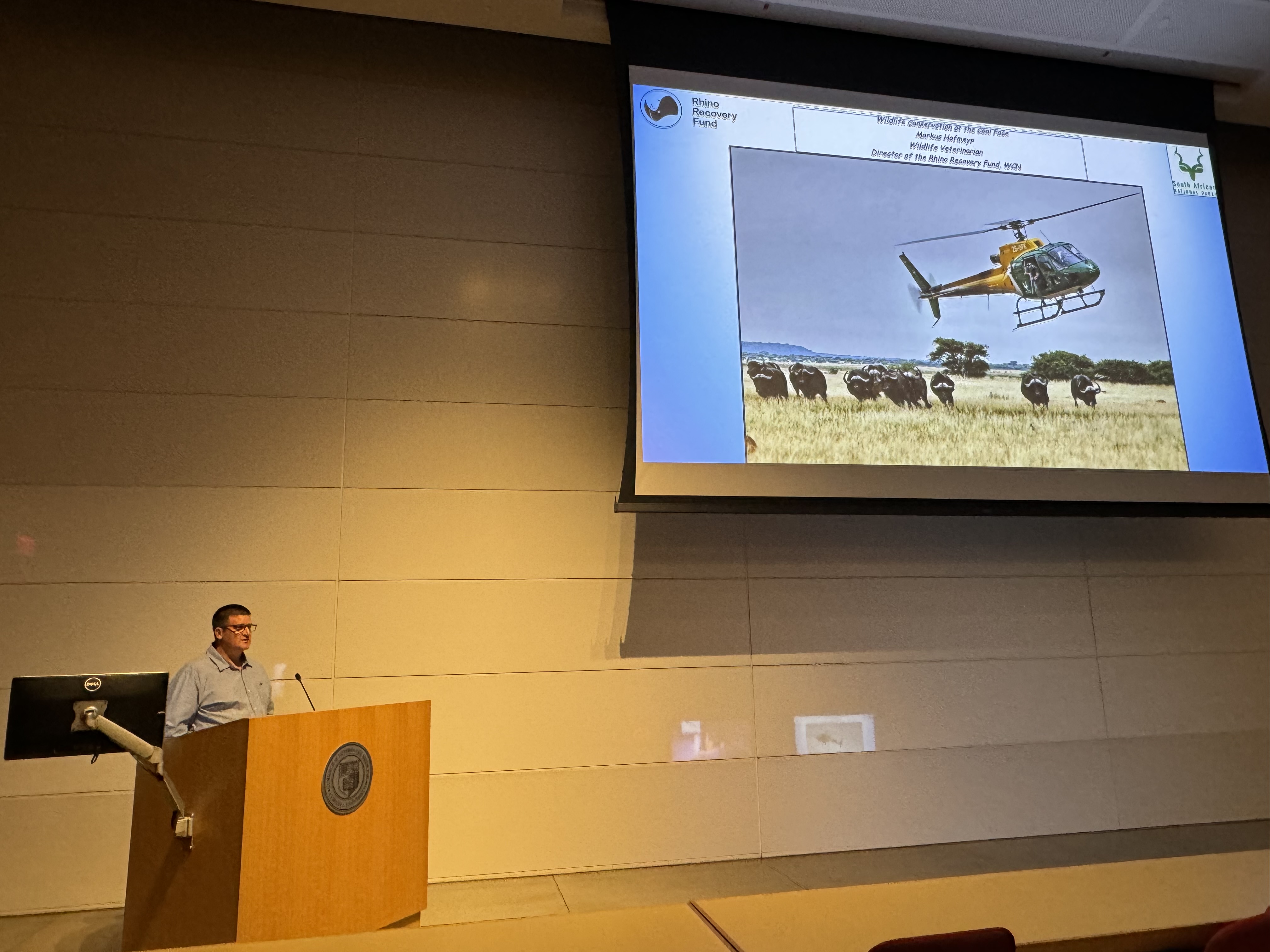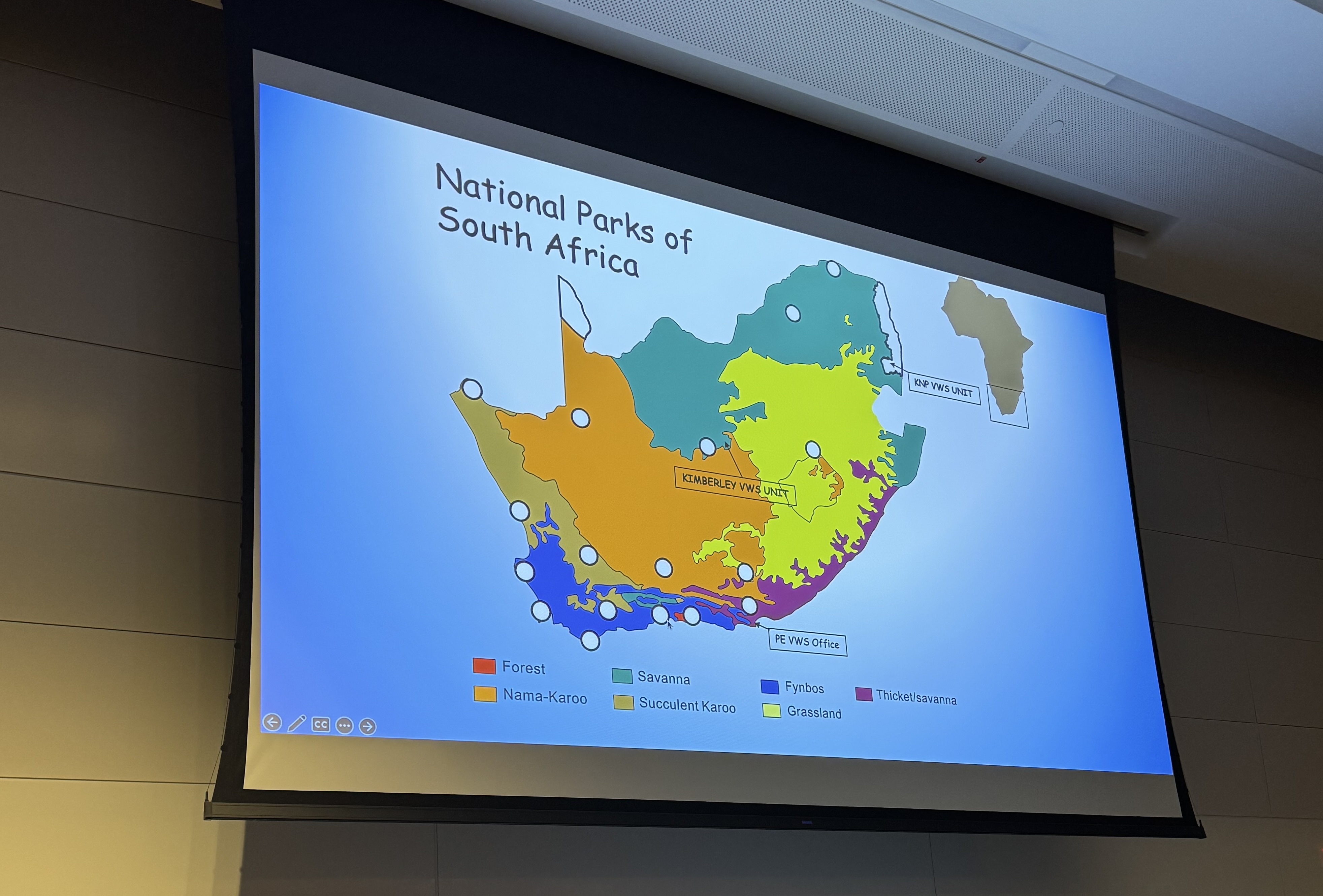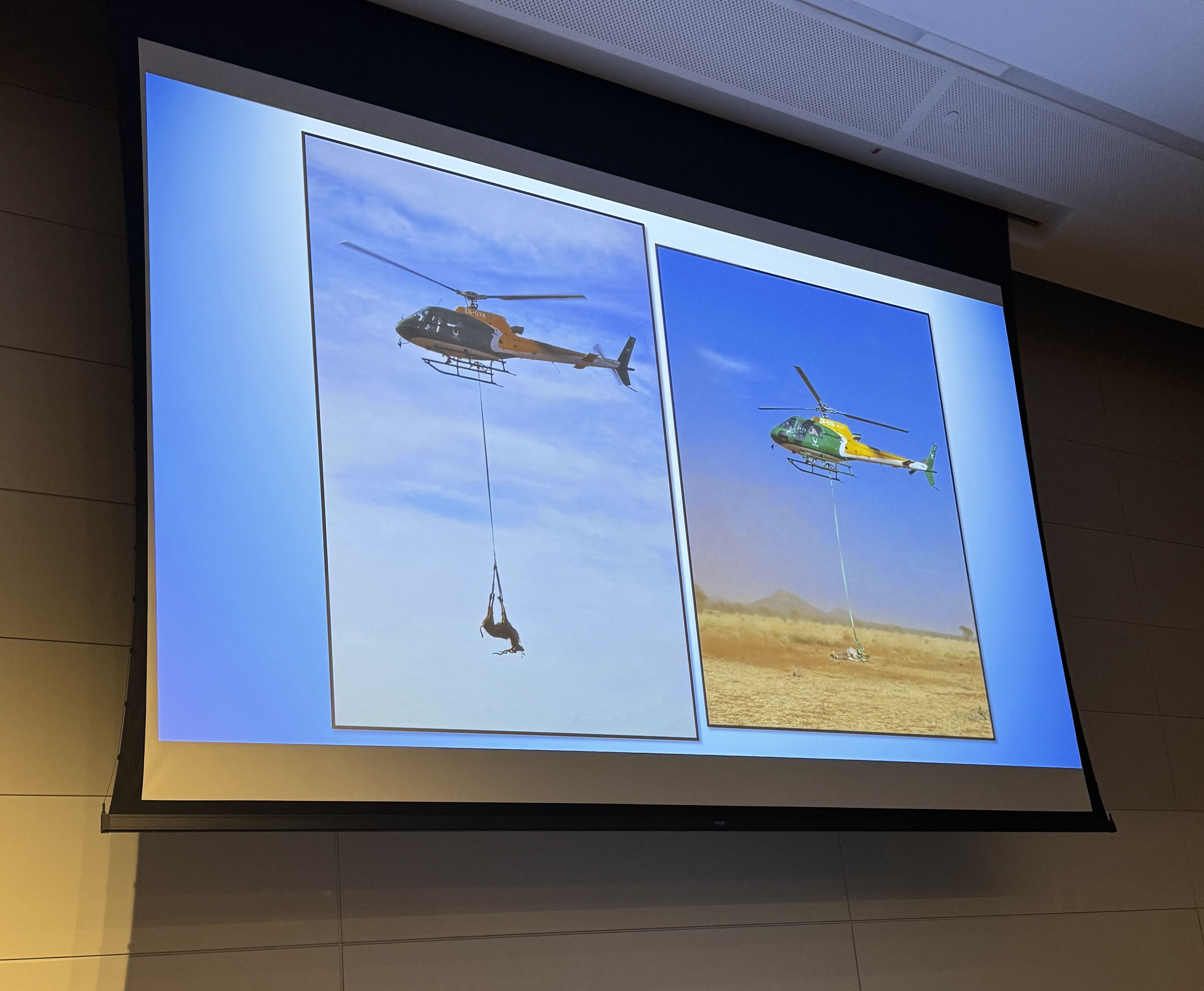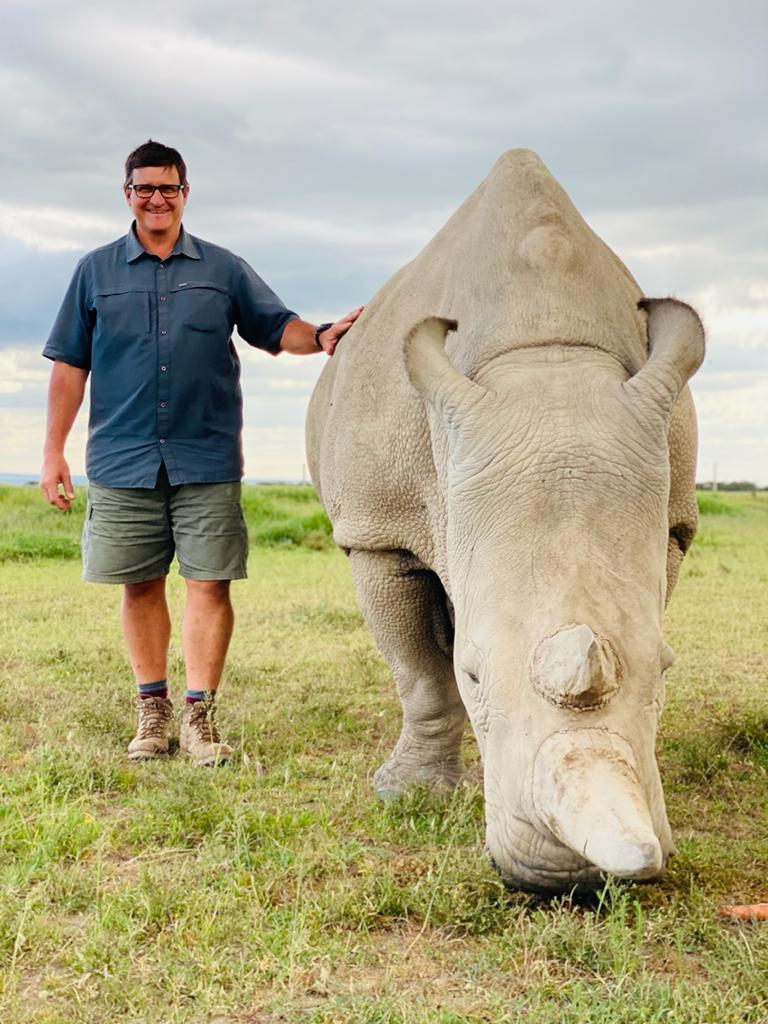Making a Difference through a Career in Conservation: An Evening with Wildlife Veterinarian Markus Hofmeyr
Renowned wildlife veterinarian Dr. Markus Hofmeyr visited Cornell University on Monday, October 23, 2023 to share his perspectives on sustainable conservation, focusing on challenges and successes around wildlife reintroduction and rewilding. He also provided important lessons for the next generation of students beginning careers in wildlife medicine and conservation.
Born in Johannesburg, South Africa and growing up around wildlife, Hofmeyr started his career as a veterinarian working with exotic animals. He then joined the Madikwe Game Reserve as a field ecologist, overseeing a large rewilding project. His work helped to reintroduce 27 mammal species and over 8,200 animals back into their former range.
Following this transformative experience, Hofmeyr joined Kruger National Park as a junior veterinarian and was eventually promoted to head of Veterinary Wildlife Services for all of South Africa’s national parks (SANParks). Currently, Hofmeyr works for the Wildlife Conservation Network as Director of the Rhino Recovery Fund, focused on protecting rhinos from wildlife crime and restoring their landscapes with the twin goals of improving the health of rhino populations and benefiting local communities.
During his presentation, Dr. Hofmeyr shared several conservation case studies. He talked about setting up new national parks and reintroducing wild species, and the challenging work that whole process entails. “If you visit these parks now, you can see lions, elephants, and many other species. Twenty years ago, this didn’t exist,” he said.
Translocations are also a fundamental way of recovering species, Hofmeyr explained. White rhinos were extinct in the Kruger National Park area in the 1800s. From the 1960s to the late 1970s, about 351 rhinos were reintroduced and the population eventually grew to more than 8,000. “That initial reintroduction not only grew to a significant population in Kruger National Park, but was also the source for many other translocations throughout the subcontinent,” Hofmeyr said.
Over the past 15 years, the demand for rhino horn has escalated, increasing poaching and spurring the development of a complex illegal wildlife trade networks run by organized crime syndicates. Hofmeyr believes that the people who live in communities in and around the parks are the best defense against poachers. Creating protected areas that provide genuine socioeconomic benefits generates sociopolitical support, which increases the chances that new livelihood opportunities for the people who live in the area will be sustained.
Sharing a case study on elephant conservation, Dr. Hofmeyr talked about elephant behavior and the realization that elephants must be moved in family groups with adult bulls. When young male elephants are reintroduced into an area that has no adult bull, they essentially become juvenile delinquents, contributing to human-wildlife conflict, due to the absence of adult supervision or role models. He also discussed habitat destruction in South Africa due to a rising population of elephants in fenced reserves. To expand elephants’ range, one idea is to create “corridors” that connect wild spaces. “A current forward-looking project is to create transfrontier conservation areas managed in a collective manner across international boundaries,” Hofmeyr said, “something your own Dr. Osofsky works on.”
Captivating students with his deep expertise, Hofmeyr also talked about the challenges of reintroducing lions and other large predators. He presented a case study on crocodile deaths from pansteatitis, an inflammation of fat cells, in the Olifants River gorge in Kruger National Park. The latest research indicates that the raising of a dam facilitated the introduction of the exotic silver carp which altered the crocodiles’ diets and is believed to have caused the pathology observed in affected animals.
“Well-meaning events like introducing a species that might be good for fishing ended up causing ecological disruption. This is happening at scale everywhere in the world,” Hofmeyr said. “Such system disruptions are a fundamental issue that we don’t have enough knowledge about, and this is an important niche area for future veterinarians who are interested in working in conservation.”
Dr. Hofmeyr also advised students who want to go into conservation medicine to obtain a range of different experiences, emphasizing the importance of a diverse set of skills. “If you want to go into conservation medicine, you have to be a politician, engineer, and disease specialist,” he said. “If we don’t protect these areas, we will end up with a significant loss of biodiversity, and future generations won’t be able to experience these incredible wild places.”
Student attendees were extremely grateful to Dr. Hofmeyr for his wonderful, inspiring talk. This event was hosted by the Cornell Wildlife Health Center and the student-led Zoo and Wildlife Society (ZAWS) based at the Cornell University College of Veterinary Medicine.
Written by Caroline Stamm ‘24




